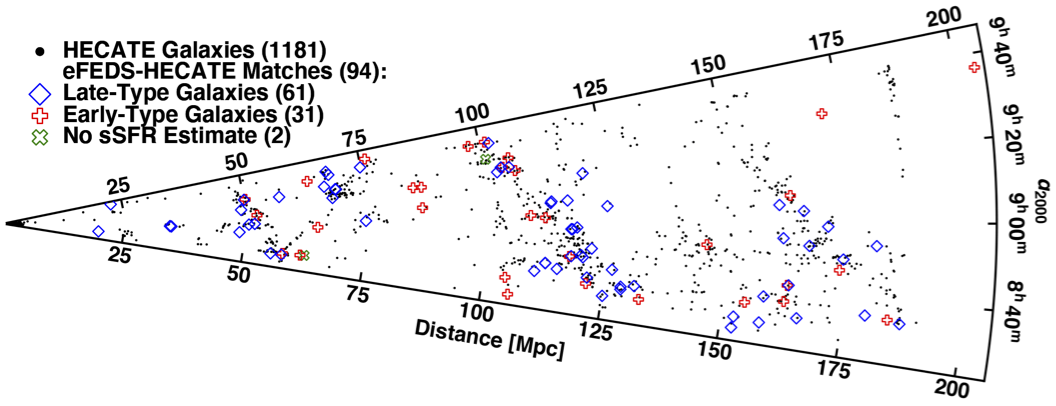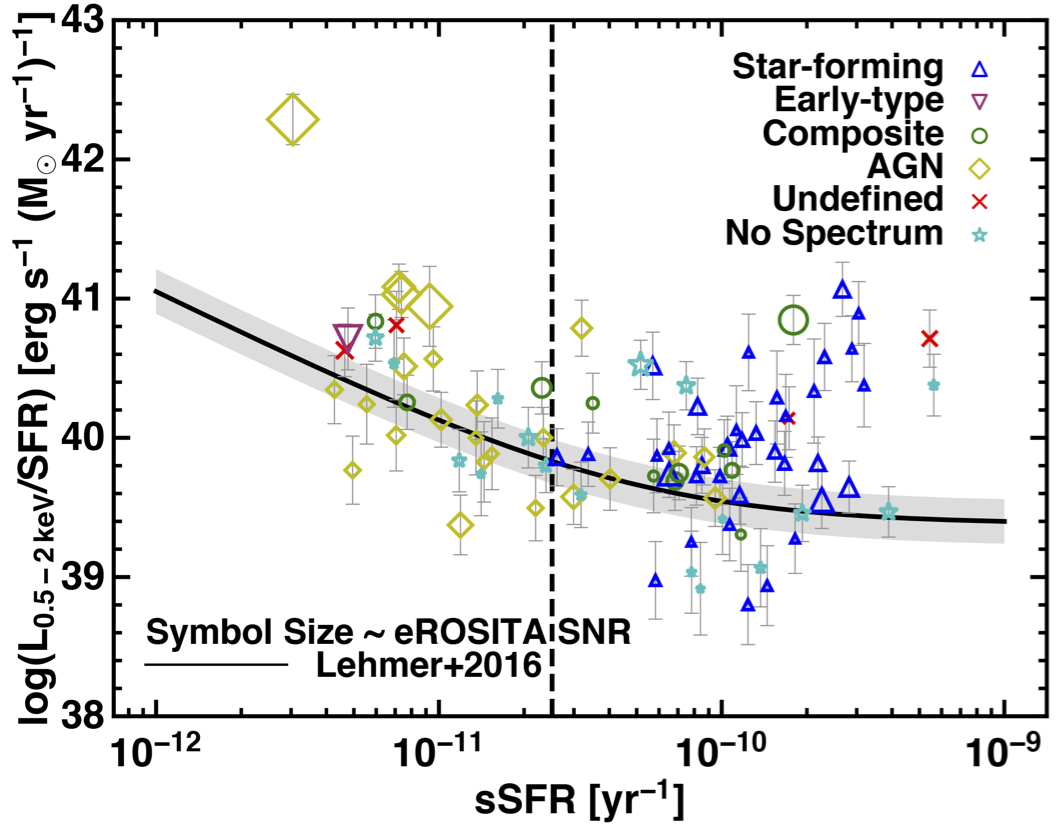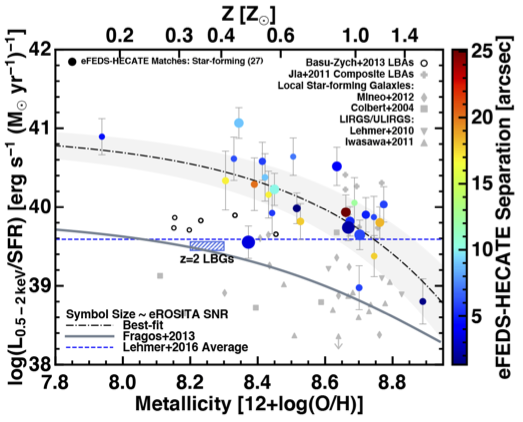The first glimpse of galaxies in the eROSITA Final Equatorial-Depth Survey
The X-ray emission of galaxies is a powerful tool for studying the populations of stellar remnants such as neutron stars and black holes. This is because many of these remnants are members of binary stellar systems in which they may accrete material from a companion star, resulting in the emission of X-ray radiation. The connection between X-ray binary systems, populations of stellar remnants, and the stellar populations in their host galaxy has been the subject of systematic theoretical and observational studies using the Chandra and XMM-Newton X-ray observatories. These studies showed that there is a strong correlation between the integrated X-ray emission from X-ray binaries in galaxies, and the star-formation rate and stellar mass of the galaxies. Furthermore, there is strong evidence that low-metallicity galaxies tend to have higher X-ray luminosities.
The eROSITA instrument on board the “Spectrum-Roentgen-Gamma” mission performs the most sensitive all-sky survey in the X-ray band. A pathfinder survey of a small (140 deg2) part of the sky reaching the full depth of the final all-sky survey (which is expected to be completed in 4 years) gives us a first glimpse of the potential of this rich dataset for studies of the X-ray emission from galaxies. This is the eROSITA Final Equatorial-depth Survey (eFEDS).

Two members of the Institute of Astrophysics (Elias Kyritsis, PhD student, and Andreas Zezas, affiliated faculty) participate in the eROSITA nearby galaxies group led by Dr. Frank Haberl at the Max-Planck Institute for Extraterrestrial Physics. A recently published study by this group (Vulic et al. 2022, Astronomy & Astrophysics, 661, A16) presented the first detailed study of the star-forming galaxies in this survey.

This work explored the X-ray emission of the galaxies in the Heraklion Extagalactic Catalogue (HECATE), that are covered by the eFEDs survey. This is a catalogue of all known galaxies within 200 Mpc and it contains extensive information regarding distance, star-forming activity, metallicity, presence of AGN. It is developed at the Institute of Astrophysics, and it is the result of a wide collaboration involving researchers at the Institute of Space Sciences (ICE-CSIC, Barcelona), the Czech Academy of Sciences, and NASA’s Goddard Space Flight Center της NASA (Greenbelt, USA).

Despite the relatively small area of the eFEDs field, this study revealed a population of dwarf star-forming galaxies with very low metallicity, which however, have much higher X-ray emission than expected based on previous studies of low-metallicity star-forming galaxies with other X-ray observatories. This excess can be as much as a factor of 10 above the expected luminosity given the star-forming activity of the studied galaxies.
An extensive search for active galactic nuclei in these galaxies did not show any such signs, leaving X-ray emission related to stellar remnants or multi-million degree hot gas as the main interpretation of the intense X-ray emission. This intriguing result has important implications for understanding the X-ray emission of star-forming galaxies in higher redshifts, and especially in the early Universe where low-metallicity dwarf star-forming galaxies were more common.
Articles:
- Vulic N. et al."The eROSITA Final Equatorial-Depth Survey (eFEDS). Presenting the demographics of X-ray emission from normal galaxies", 2022, A&A, 661, A16
- Kovlakas K. et al. "A census of ultraluminous X-ray sources in the local Universe", 2020, MNRAS, 498, 4790
